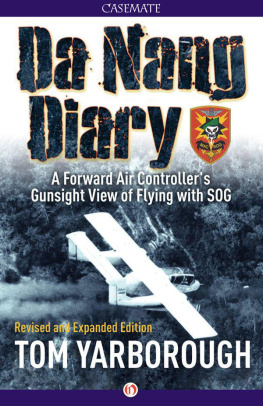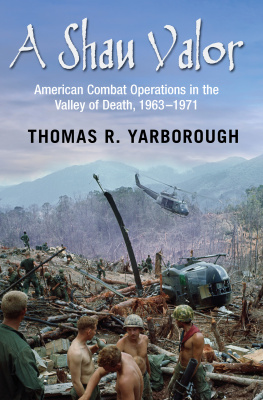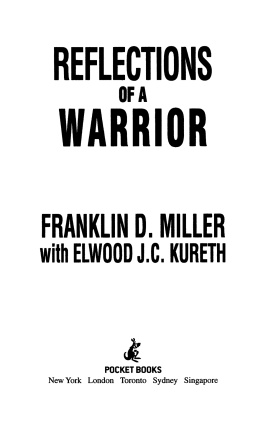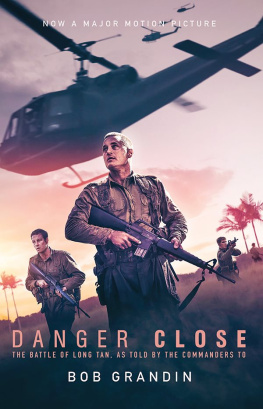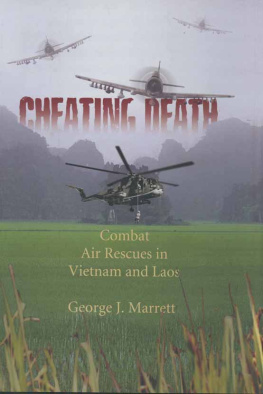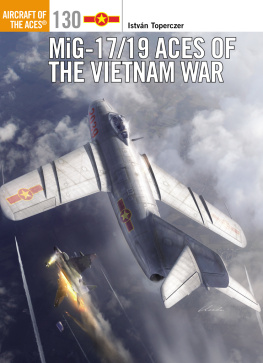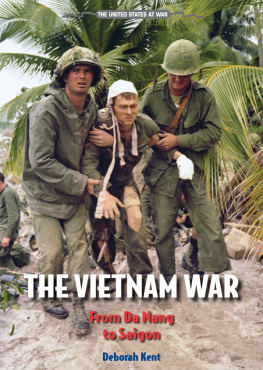
CONTENTS
This book is dedicated to the memory and incomparable fighting spirit of the more than 300 SOG recon men who gave their lives in covert combat deep in the jungles of Cambodia, Laos, and VietnamAmericas greatest warriors who willingly marched to the sound of battle.
The English Dead
Give honour to our heroes falln, how ill
Soeer the cause that bade them forth to die.
Honour to him, the untimely struck, whom high
In place, more high in hope, twas fates harsh will
With tedious pain unsplendidly to kill.
Honour to him, doomd splendidly to die,
Child of the city whose foster-child am I,
Who, hotly leading up the ensanguind hill
His charging thousand, fell without a word
Fell, but shall fall not from our memory.
Also for them let honours voice be heard
Who nameless sleep, while dull time covereth
With no illustrious shade of laurel tree,
But with the poppy alone, their deeds and death.
W ILLIAM W ATSON , 1885
INTRODUCTION
W hen I first put pen to paper to begin this project, the original aim was to chronicle my year of combat in Vietnam as a forward air controller. The focus quickly shifted. In short order the effort changed into an investigation of my personal experiences as a vehicle for examining the extraordinary events surrounding the ultra-secret Studies and Observations GroupSOGthe most clandestine U.S. military unit to serve in the Vietnam War. As an Air Force pilot I was in no position to address the operational ground details of the covert program known as Operation Prairie Fire, involving harrowing Special Forces-led commando raids into Laos and the DMZ, but I had hoped to flesh them out by adding the perspective of the Air Force Forward Air Controllers who supported SOG reconnaissance teams on their dangerous missions far behind enemy lines. For me, attempting to weave together the historical strands of an intense year of combat interlaced with the livesand deathsof dozens of fellow warriors presented a daunting, if not overwhelming, task. Within obvious limits, I think I was successful. Yet I have always harbored feelings of dissatisfaction and frustration about not being able to tell the whole story.
For one thing, I feel compelled to point out that the whole story is an evolving one, as evidenced by the fact that as a nation we once again find ourselves embroiled in an unconventional war, a battle forced upon us by the terrorist attacks of September 11, 2001. And as in Vietnam, United States Army Special Forces units in Afghanistan are at the point of the spear, operating in total secrecy and without recognition for the dangerous missions they perform. I suspect that current reporters and historians sifting through the limited information available on special operations in Afghanistan will chafe from the security restrictions and at not being able to get at the whole story. But when they do, it will be clear that a direct link from the Green Berets in Vietnam to the new generation of Special Forces in Afghanistan was fully operative, forged in the same professionalism, dedication, and sacrifice. Hopefully, historians will not be forced to wait thirty years before the veil of secrecy is lifted and information is made available for study, analysis, and the telling of another epic chapter of the whole story.
During the intervening years since publication of the first abridged stories about SOG, we have witnessed an astonishing increase in the amount of information available in the public domain about even the most secret operations of the Vietnam War. The end of the Cold War and the declassification of millions of documents have, in many cases, literally eliminated the security restrictions through which we were once forced to view the official American experience in Vietnam. Those same security filters had also hampered those of us within the military who wrote about that war, our perspectives invariably obscured by our reliance on unclassified sources and by adherence to bureaucratic laws such as the Espionage Act of 1917 and Title 18 of the US Code, Section 798, which specified ten years in prison and a $10,000 fine for disclosing secrets. In most cases we respected the requirement, if somewhat reluctantly, to protect classified information, even though it meant leaving out salient facts and key components of the story. Now, most of the filters are gone and the restrictions are off.
Three author/historians in particular have pushed the envelope and opened the files on SOG. In The Secret War Against Hanoi, author Richard Shultz concentrates on the broader picture and has produced a thoroughly researched and insightful policy study of SOGs covert special operations within the context of the war in Southeast Asia. In The Blood Road: The Ho Chi Minh Trail and the Vietnam War, John Prados, using recently declassified documents, oral histories, memoirs, and interviews, offers the most detailed and complete history to date on American efforts to block the Ho Chi Minh Trailand North Vietnams monumental exertions to build it and keep it open. At the operational level, John L. Plasters SOG: The Secret Wars of Americas Commandos in Vietnam is the definitive account of the courage and dedication displayed by Special Forces-led reconnaissance teams going in harms way across the fence into Laos, Cambodia, and North Vietnam.
Because of the pioneering efforts of Shultz, Prados, and Plaster, I have been inspired to re-visit my own aerial account of supporting SOG reconnaissance teams. By way of explanation, this book was not fashioned by relying solely on the mystic chords of memory. Most of the material comes from the extensive diary I kept while at Da Nang, along with excerpts from actual cassette tapes used to record many of my airborne missions. Whenever possible, facts, dates, names, and details of events have been cross-checked against official historical documents or through personal interviews with surviving participants. The twelve-hundred-page diary proved to be invaluable to me in at least two important ways. First, it helped me bring back to life the mood of that particular tumultuous time, to reconstruct and interpret events as they were seen and felt then, within the actual context of a divisive war. Second, it also provided me with a vital crosscheck against my own memory of forty-year-old events, or as a safety check on the sometimes faded or distorted recollections of my fellow warriors.
While it has been a matter of quiet satisfaction to me that the main outlines of the original book require little revision, I nevertheless welcome the opportunity to update, refine, and expand my treatment of Da Nang Diary by including additional background and details previously locked away in some dusty Pentagon safe marked Top Secret. The Forward Air ControllersPrairie Fire FACshad a gods-eye-view of the action, and their missions and experiences in SOGs covert war are an integral ingredient of the whole story. I am proud and honored to tell their part of it.
Admittedly, Da Nang Diary probably suffers from the same two afflictions inherent in most memoirs: self-immersion and limited perspective. To offset the first, described by an anonymous philosopher as memories played in the key of ego, I have sought a balanced rendering of the events surrounding my years in combat as a FAC, complete with warts and mistakes, miscues and mental errorsall executed within the wartime experience of maturing, adapting, and surviving in an environment that no one can be fully prepared for. Dealing with the challenge of limited perspective proved to be a bit more intimidating. As a very young pilot caught up in the heat of battle and the proverbial fog of war, my perspective was defined by my job: to fly and to fight. As often as not, I had no inkling as to the policies and decisions behind the battles we fought each day. To compensate for that narrow focus, I have attempted to expand the story by including relevant background information, newly declassified facts, and bits of genuine historical perspective. I do not, however, describe my memoir as history, for that task belongs to another generation. But I claim with confidence that this updated edition is a contribution to history which will be of service not only to future researchers, but also to general readers attempting to understand the complexities and nuances of the American war effort in Southeast Asia.
Next page
